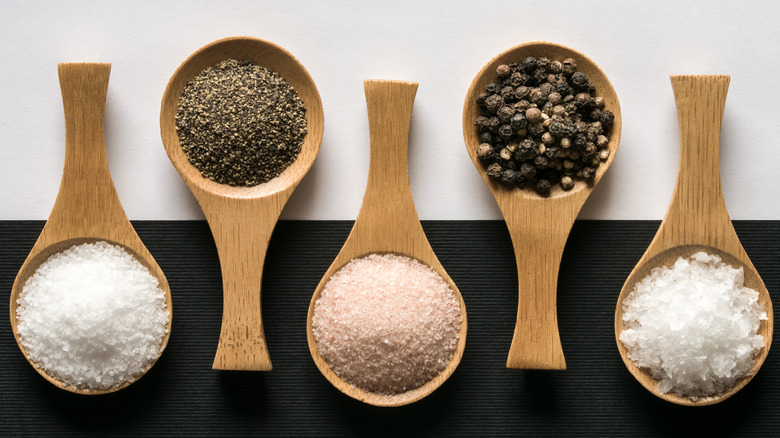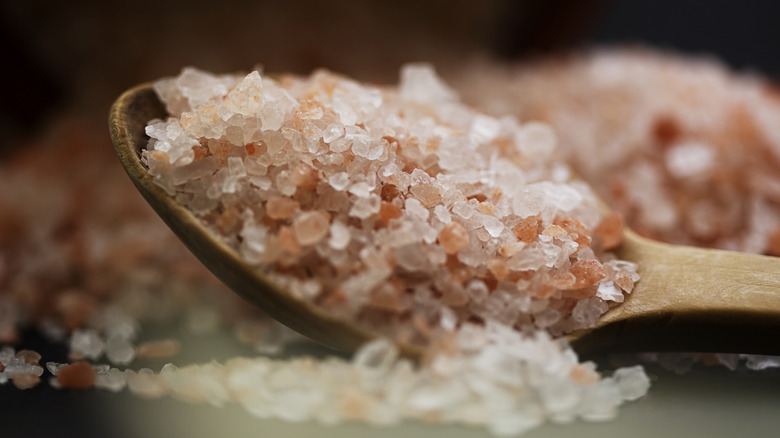Is There Really A Difference Between Himalayan Salt And Kosher Salt?
Salt is one of the most fundamental elements of cooking. Not only does it enhance the flavor of everything it touches, it often fills other critical roles in brining, preserving, or otherwise chemically altering food in profound and delicious ways.
But it's important to know that all salt isn't the same. In fact, there can be significant differences between, for example, tiny, fine table salt and big, flaky sea salt. Two of the other most common descriptors you'll find on packages of salt these days are "kosher" and "Himalayan." Other than the pinkish hue of Himalayan salt, some wonder if there's truly any difference between the two. Despite their similar appearance, there's a real distinction between these two popular salt varieties.
First, let's talk about kosher salt. It takes its name from the koshering process, a traditional Jewish technique for treating meat before eating. The method used coarse salt crystals to draw blood out of meat. According to Saltworks, it's crucial to distinguish between kosher-style salts (which can include coarse varieties processed from sea salt) and true kosher-certified salt, which is mined from the earth and processed in accordance with strict standards that prohibit any chemical additions or artificial alterations. This means it won't contain vital vitamins or nutrients sometimes added to salt, like iodine. Kosher salt is a versatile choice in the kitchen, equally useful for seasoning food at any stage of the cooking process and prepping items for curing, smoking, or pickling.
Mile-high flavor from Himalayan salt
On the other hand, Himalayan salt is a more specific product. According to Saltean, Himalayan salt is harvested specifically from the Khewra Mines in the Punjab region of Pakistan. This massive salt deposit (created by the drying of an ancient sea) is the world's second-largest and is known for its distinctive pink hue. The reason for Himalayan salt's delightful color is a particular combination of trace elements imbued in the salt. Despite some claims to the contrary, they, unfortunately, don't typically exist in high enough quantities to provide extra health benefits, according to WebMD. Some also feel these additions produce a more complex flavor in these hard, compact crystals. Himalayan salt is also commonly found in non-food uses like lamps, skin exfoliants, and bath salts.
Fortunately, it's easy to substitute one for the other if you don't have a particular type on hand. The salt experts at Morton say it's as easy as swapping out one teaspoon of Himalayan salt in exchange for every one and a fourth teaspoons of kosher salt. Keep these crucial but subtle differences in mind, and you'll always be prepared to perfectly season your next dish.

